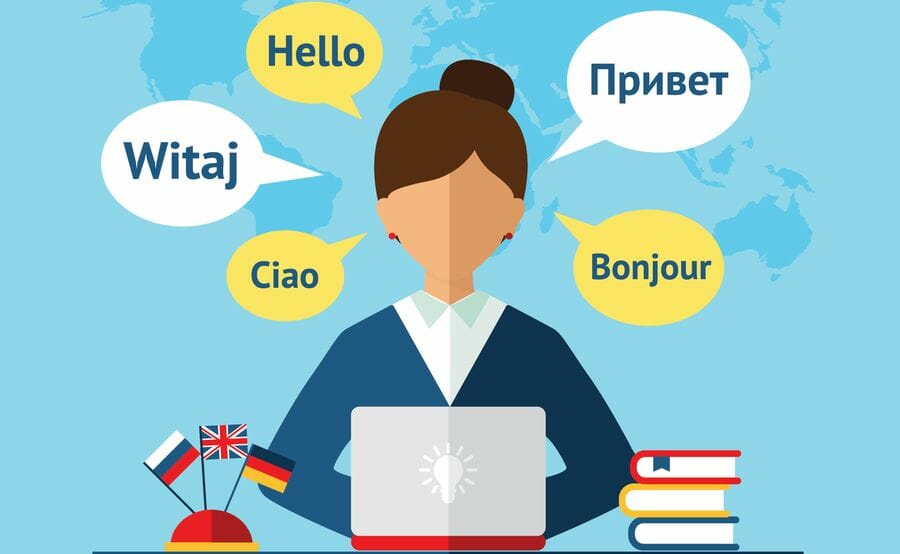Website usability is a broad term that describes the ease of using and interacting with a website. An important thing to remember when designing a website to be usable, however, is that not everyone engages with a website the same way or under the same circumstances.
If you design a website for the “average” or “ideal” user, you could realistically end up creating an unpleasant, difficult, or impossible-to-use interface for others.
Guidelines provided by the World Wide Web Consortium as well as local governments have helped designers close the gaps when it comes to usability and accessibility. However, that doesn’t necessarily make a website fully inclusive.
In the following post, we’re going to examine what inclusive design means, its value in web design, as well as what you need to consider when designing inclusive interfaces and interactions.
What Is Inclusive Design?
Inclusive web design removes bias and assumptions from a website so that users won’t feel excluded due to an impairment, demographics, or other temporary or permanent circumstances.
Both accessible web design and UX design are critical components of an inclusive website. Accessible design is the process of removing the barriers to entry for people with disabilities and other impairments. UX design is a data-driven approach to design that tests and validates how real users engage with a website.
Because of this, there’s a lot to consider in inclusive design as it’s not strictly a user’s impairment that can prevent them from fully using or being satisfied with a website. Web designers can also run into issues by crafting experiences for an exclusive set of users.
As such, web designers need to consider the following factors:
- Physical impairments related to vision, hearing, or dexterity
- Mental impairments that impact cognition or speech
- Situational limitations that prevent the user from fully engaging with the product
- Technical constraints like hardware, internet connectivity, and computer literacy
- Language and geographic barriers
- Demographic differences like age, race, and gender
- Socioeconomic differences
Bottom line: Inclusive design ultimately translates to universal design.
Web designers have a variety of tools at their disposal to address the accessibility aspect of inclusive design. For instance, WordPress accessibility tools, web accessibility checkers, WAI-ARIA guidelines and more can make accessible design and implementation easier to do.
With inclusive design, however, it requires a greater understanding of limitations that users may face on the web. There isn’t a tool that will scan your website and confirm that you’ve created the most diverse and equitable experience possible. It’s something you’ll have to learn how to implement and check for on your own.
Why Inclusive Web Design Is Important
There are a number of reasons why web designers need to make accessibility and inclusivity part of every website they build. Let’s look first at how a non-inclusive website hurts everyone:
The Downside of Non-Inclusivity
In 2021, WebAIM published the results of its Screen Reader User Survey #9. 7.7% of the survey’s respondents said that they have to use a screen reader when they’re online.
When asked how they felt about the state of Internet accessibility today, only 39.3% said it was more accessible than in previous years. 42.3% felt that nothing had changed while 18.5% said it was worse.
According to Mike Gifford of CivicActions, it might be more than 7.7% of the population that experiences inaccessibility and shares these feelings:
“The combination of disabilities and methods with which people overcome barriers are extremely diverse. Ethically, building for our least advantaged users has got to be given the highest priority. Unfortunately, with our constant drive for the new and flashy, we are regularly excluding 10-20% of our fellow citizens.”
According to the American Bar Association, there were 8,000 Americans with Disabilities Act Title III lawsuits filed with federal courts between 2017 and 2020. That number jumped up 14.3% to 2,352 lawsuits in 2021 alone, according to Accessibility.com.
There are others who may feel excluded from a website, but have no legal recourse. For instance, the World Data Lab says that there are 1.1 billion internet-poor people. In some cases, this means they can’t afford mobile data plans. In other cases they can, but they don’t get enough data to use, so they can’t afford to spend time on resource-heavy websites.
There’s also the elderly population to consider. The Pew Research Center found that the number of seniors using the Internet has grown in recent years. That said, TechCrunch reports that roughly 50% of older adults need someone to help them set up and use new digital technologies. In addition, 40% seniors are digitally illiterate in the city of San Francisco — right beside Silicon Valley, of all places.
Even if your website isn’t subjected to lawsuits, consider what losing 20% or more of your visitors due to a non-inclusive design will do to a brand’s long-term viability. That’s a huge segment of the audience that’ll be gone simply because the website isn’t welcoming or usable.
The Upside of Inclusivity
When you design a website to be inclusive, you design it so that everyone who wants to can engage with it fully and not feel excluded. Everyone wins when the Internet becomes an inclusive place:
Inclusive web design leads to better product design.
From websites to mobile apps and everything in between, inclusive design forces designers to go back to the basics of good, usable and empathetic design.
Brands reach a larger audience.
A brand that prioritizes a universally positive experience for everyone and not just the ideal user will attract a more loyal base of users who value inclusivity and equity as well.
Users feel better interacting with inclusive websites.
People spend so much time in front of screens that issues like carpal tunnel syndrome, computer vision syndrome and internet addiction disorder are all too common these days. Inclusive, ethical design can help users feel better in both their minds and bodies.
Inclusive web design helps websites rank better in search results.
Google updated its search algorithm a couple years ago, naming four factors essential to creating the best on-page experience: Performance (speed) Accessibility, Best Practices (design and code) and SEO (e.g. alt text). Inclusive design contributes to each of these.
How To Create Inclusive Web Design Personas
Oftentimes, designers will come up with fictional personas at the beginning of website projects. This helps them visualize and relate to the end user they’re building the website for. It also helps them understand how that particular user would engage with the website.
When you include inclusivity in your web design process, your user persona descriptions will need to adjust somewhat. Typical user personas break down the following:
- Name
- Demographics (e.g. age, gender, occupation, etc.)
- Personality
- Voice
- Goals
- Motivations
- Frustrations
- Fears
Inclusive user personas will also need to include:
Ability: This is the accessibility component of inclusivity. You’ll have to anticipate how some of your users may be restricted in terms of how they use and engage with the website — physically and cognitively.
Aptitude: If you look at the data on how many users are online, you’ll realize that some of your users might not be digitally literate. Deviating from basic structures and layouts and not providing enough context (like labels in contact forms) could prove detrimental to these users’ experiences.
Attitude: This refers to users who may perceive websites as unsafe environments. Whether they’re overly concerned about their privacy or nervous about encountering malware, these types of fears should be addressed with recognizable and trustworthy security and privacy features.
Access: Users don’t have to be internet-poor in order to have limited access to the web. For instance, just over half of the world’s population has Internet access in the home, according to UNESCO. That doesn’t mean that they can’t get online, it just means they have to find other ways to get it — like going to a library or internet cafe. So, connectivity, hardware, software, and even location can all impact access.
Localization: It’s never safe to assume that every user lives in the same country, comes from the same culture and speaks the same language as you. As such, these differences have to be addressed when creating inclusive user personas.




